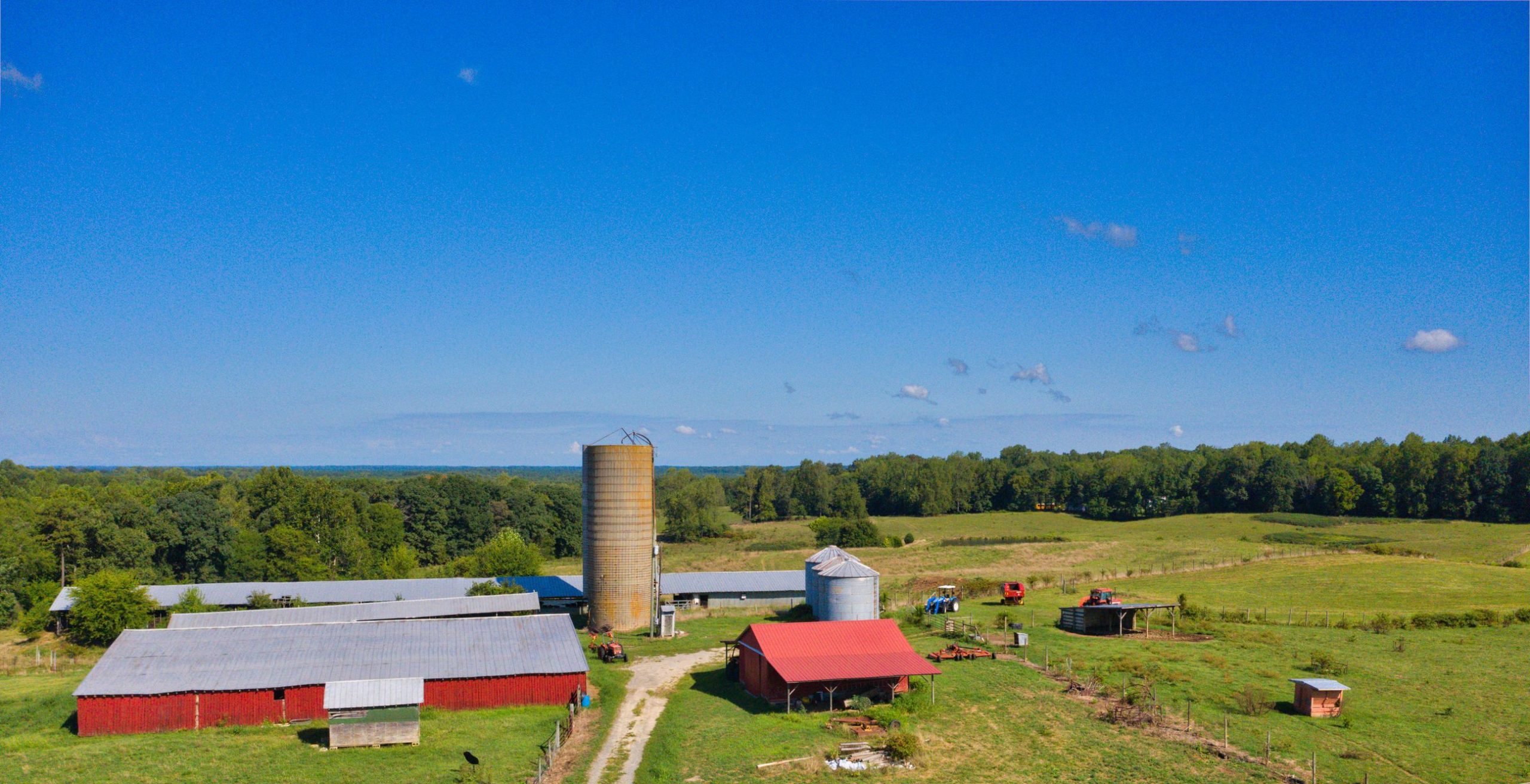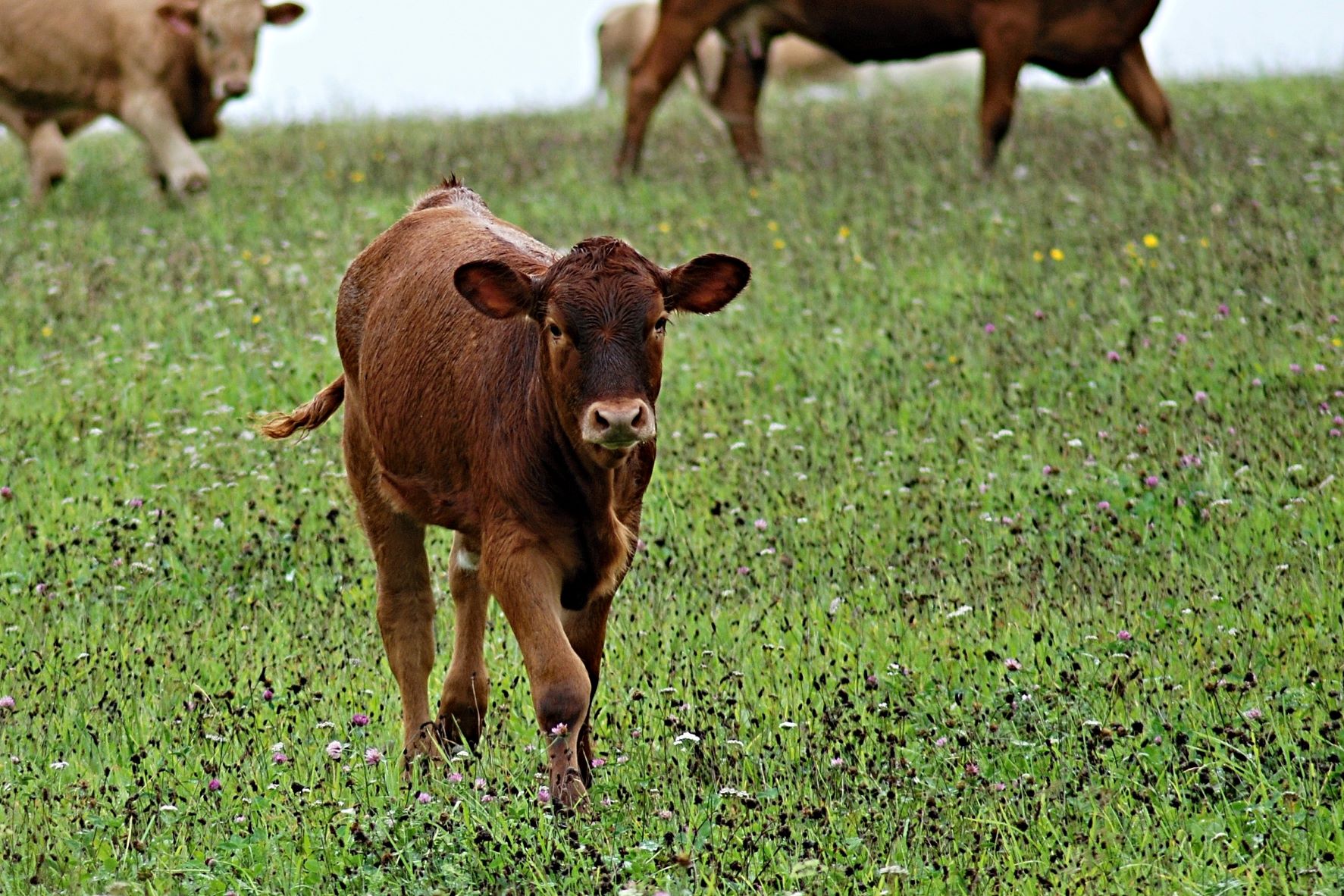Cattle & Sustainability Practices
Dunn Right Ranch- Amelia, VA
Grass Fed Beef
Grass-fed beef has gained popularity in recent years as consumers become more interested in the health and environmental benefits of this type of meat.
Grass feed cattle means raising them on a diet of fresh pasture grass, instead of grain or other feed supplements. Below we explain the benefits of grass-fed beef and how our farming methods work.

Benefits of Grass Feeding:
- Healthier Meat: Grass-fed beef is lower in total fat and calories, and higher in essential nutrients like omega-3 fatty acids, vitamin E, and conjugated linoleic acid (CLA). CLA is a type of healthy fat that has been shown to have anti-cancer properties and may help reduce inflammation in the body.
- Better for the Environment: Grass-fed beef production is more sustainable than grain-fed beef, as it does not require human production of corn and other grains to produce. Additionally, grass-fed cattle can graze on pasture land that is unsuitable for crops, like rolling hills and mountains, reducing the demand for land and resources needed for other types of agriculture.
- More Humane: Grass-fed cattle are raised in a more natural environment, with access to fresh air, sunshine, and plenty of space to move around. They are not subjected to the cramped and stressful conditions of feedlots, which can lead to illness and poor health.
- Supports Local Agriculture: Grass-fed beef is typically produced by small-scale, local farmers who use sustainable farming methods. By supporting these farmers, consumers can help to build a more resilient and diverse food system.

How Grass Feeding Cattle Works
Cattle raised on a grass-fed diet typically take longer to reach maturity than those raised on a grain-fed diet. This is because grass-fed cattle are not given growth hormones, and their diet is lower in calories than grain-fed beef. However, this slower growth process results in leaner, healthier meat with better flavor.
We use rotational grazing techniques to manage our pastures and ensure that the grass and other forage remain healthy and abundant. This involves moving the cattle to a new pasture area every few days, allowing the grass in the previous area to regrow and replenish. Rotational grazing also helps to prevent overgrazing and soil erosion, which can lead to environmental degradation.
Grass-fed beef production offers numerous benefits for both the environment and human health. By supporting us, your local and sustainable beef farm, you allow us to keep helping the environment and give you a tastier higher quality product.
Our Cattle
On our farm we raise several different types of beef cow. We have Akaushi, Black Angus, and South Poll.
- Akaushi is a breed of cattle that originates from Japan. Akaushi is known as the “Emperor’s Breed.” All Akaushi are Wagyu, but not all Wagyu are Akaushi. The Akaushi breed did not exist outside of Japan until the 1990s. Akaushi cattle are known worldwide for their distinct marbling that gives Akaushi beef a melt-in-your-mouth texture and rich, buttery flavor. They are known for their distinctive red coat color and are highly valued for their meat quality. The meat of Akaushi is known for its marbling, tenderness, and rich flavor.
- Black Angus, on the other hand, is a popular breed of beef cattle that originated from Scotland. They are commonly raised in the United States and known for their black coat color, which is why they are often referred to as simply “Angus” or “Black Angus”. Black Angus is highly regarded for its meat quality, which is tender, juicy, and flavorful.
- South Pole is a breed of cattle that was developed by Teddy Gentry of the band Alabama. South Polls are bred to be slick-haired, small-framed cows with emphasis placed on high fertility, longevity, and calm disposition. South Polls are bred to excel on a grass based grazing system which gives them a very lean and tender meat which is higher in Omega-3 fatty acids and lower in cholesterol.
